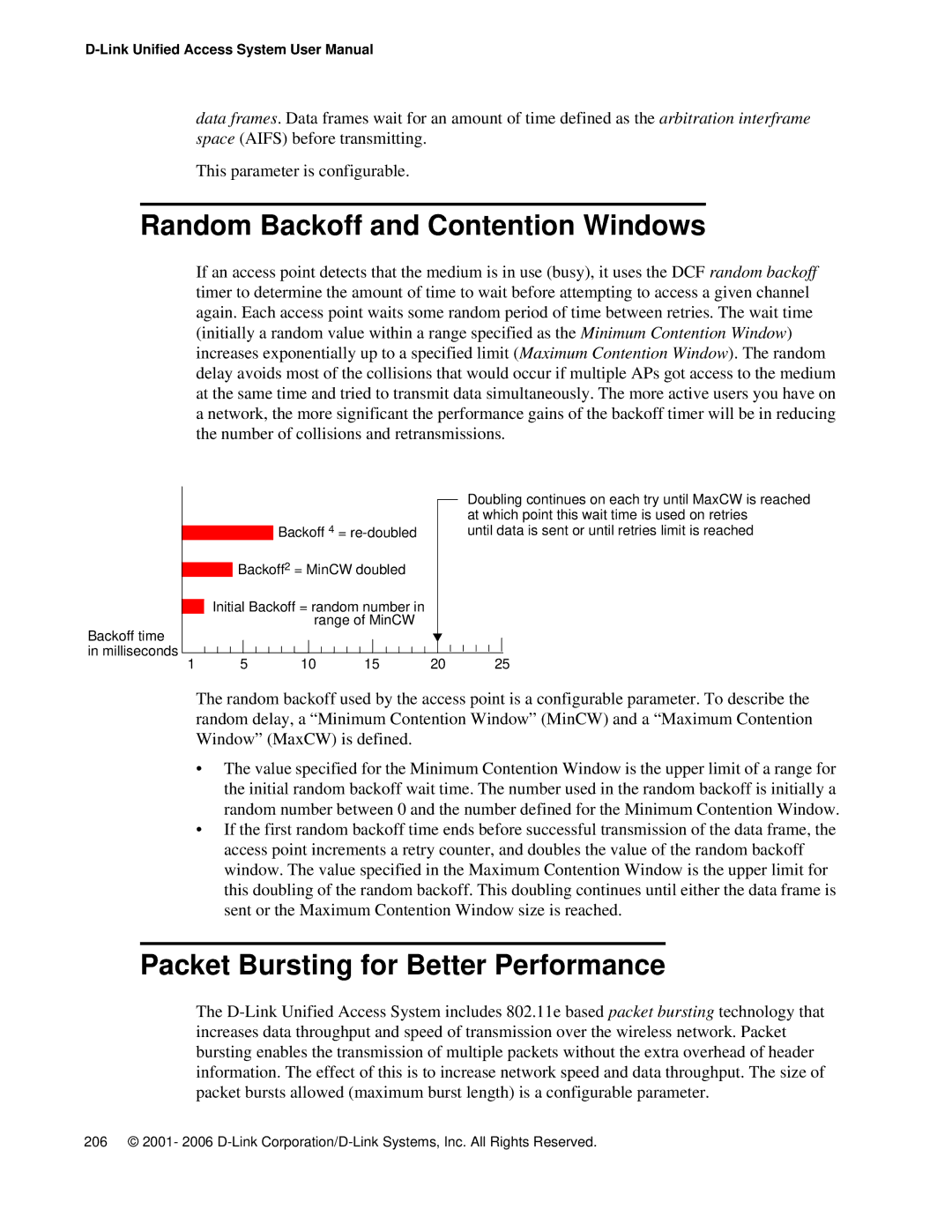
data frames. Data frames wait for an amount of time defined as the arbitration interframe space (AIFS) before transmitting.
This parameter is configurable.
Random Backoff and Contention Windows
If an access point detects that the medium is in use (busy), it uses the DCF random backoff timer to determine the amount of time to wait before attempting to access a given channel again. Each access point waits some random period of time between retries. The wait time (initially a random value within a range specified as the Minimum Contention Window) increases exponentially up to a specified limit (Maximum Contention Window). The random delay avoids most of the collisions that would occur if multiple APs got access to the medium at the same time and tried to transmit data simultaneously. The more active users you have on a network, the more significant the performance gains of the backoff timer will be in reducing the number of collisions and retransmissions.
|
|
|
|
|
|
|
|
|
|
|
|
|
|
|
|
|
|
|
|
|
|
| Doubling continues on each try until MaxCW is reached | |||
|
|
|
|
|
|
|
|
|
|
|
|
|
|
|
|
|
|
|
|
|
|
| at which point this wait time is used on retries | |||
|
|
|
|
|
|
| Backoff 4 = |
|
|
|
| until data is sent or until retries limit is reached | ||||||||||||||
|
|
|
|
|
|
|
|
|
| |||||||||||||||||
|
|
|
| Backoff2 = MinCW doubled |
|
|
|
|
|
|
|
| ||||||||||||||
|
|
|
|
|
|
|
|
|
|
|
| |||||||||||||||
|
| Initial Backoff = random number in |
|
|
|
|
|
|
|
| ||||||||||||||||
|
|
|
|
|
|
|
|
|
| |||||||||||||||||
Backoff time |
|
|
|
|
|
|
|
|
| range of MinCW |
|
|
|
|
|
|
|
| ||||||||
|
|
|
|
|
|
|
|
|
|
|
|
|
|
|
|
|
|
|
|
|
|
|
|
|
| |
in milliseconds |
|
|
|
|
|
|
|
|
|
|
|
|
|
|
|
|
|
|
|
|
|
|
|
|
|
|
| 5 |
| 10 |
|
| 15 |
|
|
| 20 |
| 25 | ||||||||||||||
1 |
|
|
|
|
|
|
| |||||||||||||||||||
The random backoff used by the access point is a configurable parameter. To describe the random delay, a “Minimum Contention Window” (MinCW) and a “Maximum Contention Window” (MaxCW) is defined.
•The value specified for the Minimum Contention Window is the upper limit of a range for the initial random backoff wait time. The number used in the random backoff is initially a random number between 0 and the number defined for the Minimum Contention Window.
•If the first random backoff time ends before successful transmission of the data frame, the access point increments a retry counter, and doubles the value of the random backoff window. The value specified in the Maximum Contention Window is the upper limit for this doubling of the random backoff. This doubling continues until either the data frame is sent or the Maximum Contention Window size is reached.
Packet Bursting for Better Performance
The
206 © 2001- 2006
